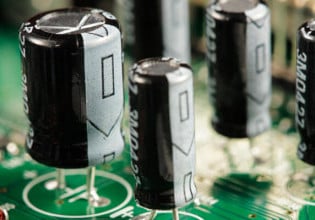Dell Announces New Energy-Efficiency Computing Standard To Cut Consumption 25% By 2010
Dell announced aggressive plans to further reduce the energy consumption of its products and avoid millions of tons of CO2 emissions worldwide. The company’s laptops and desktops are being designed to consume up to 25% less energy by 2010 relative to systems offered today.
"Our customers are inspiring us to address the environmental challenges facing our planet," said Albert Esser, Vice President of Power and Infrastructure Solutions, Dell Product Group. "We’ve listened to them and are designing next-generation technologies that dramatically reduce energy consumption, drive meaningful cost savings and help achieve a low-carbon economy. It’s the right thing for our business, our customers and shared environment."
Dell plans to achieve its energy-efficiency goals by continuing to integrate "Energy Smart" technologies, including circuit designs, fans and power management features. The company is also working closely with its supplier base to further develop and deliver energy-efficient components, including chip sets, power supplies and memory.
The company claims that it currently enables desktop customers to lower energy costs by offering more 80 PLUS certified power supplies than any other Tier-1 manufacturer. The 80 PLUS specification aligns to the power-supply requirements in the EPA’s Energy Star 4.0 standard for computers and requires the use of 80% or more efficient power supplies. Dell states that it is the first Tier-1 manufacturer to offer a bronze-level supply.
The company also provides what it describes as free, easy-to-use tools and resources to plan and manage power consumption. Dell’s OpenManage systems management portfolio is said to help organizations reduce power consumption by providing functionality to more effectively set and maintain Energy Smart configurations across client PCs. Customers also can access online calculators to measure and assess potential impact to their power bills. Laptop, desktop and server customers are able to compare configurations side by side to determine annual cost savings and CO2 emissions avoided through the use of energy smart systems.






